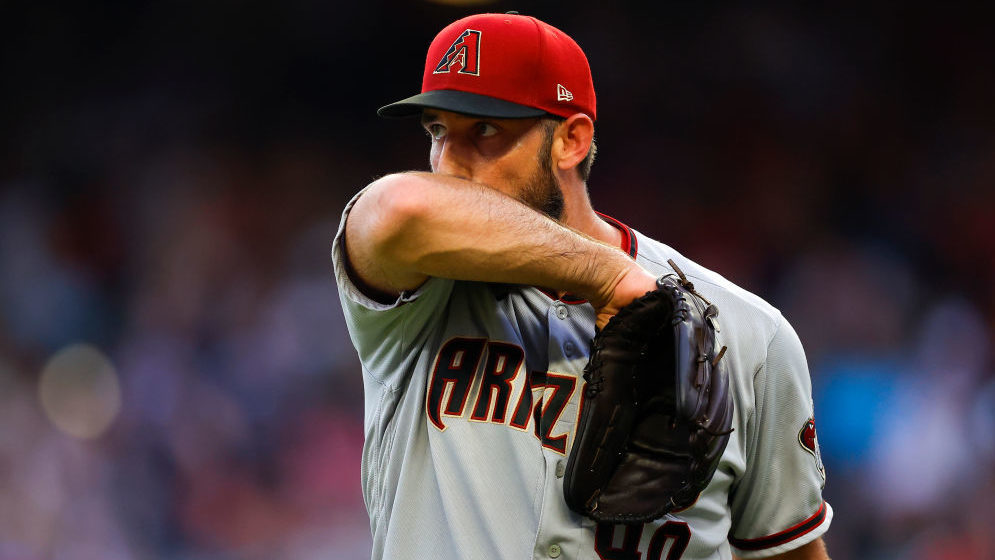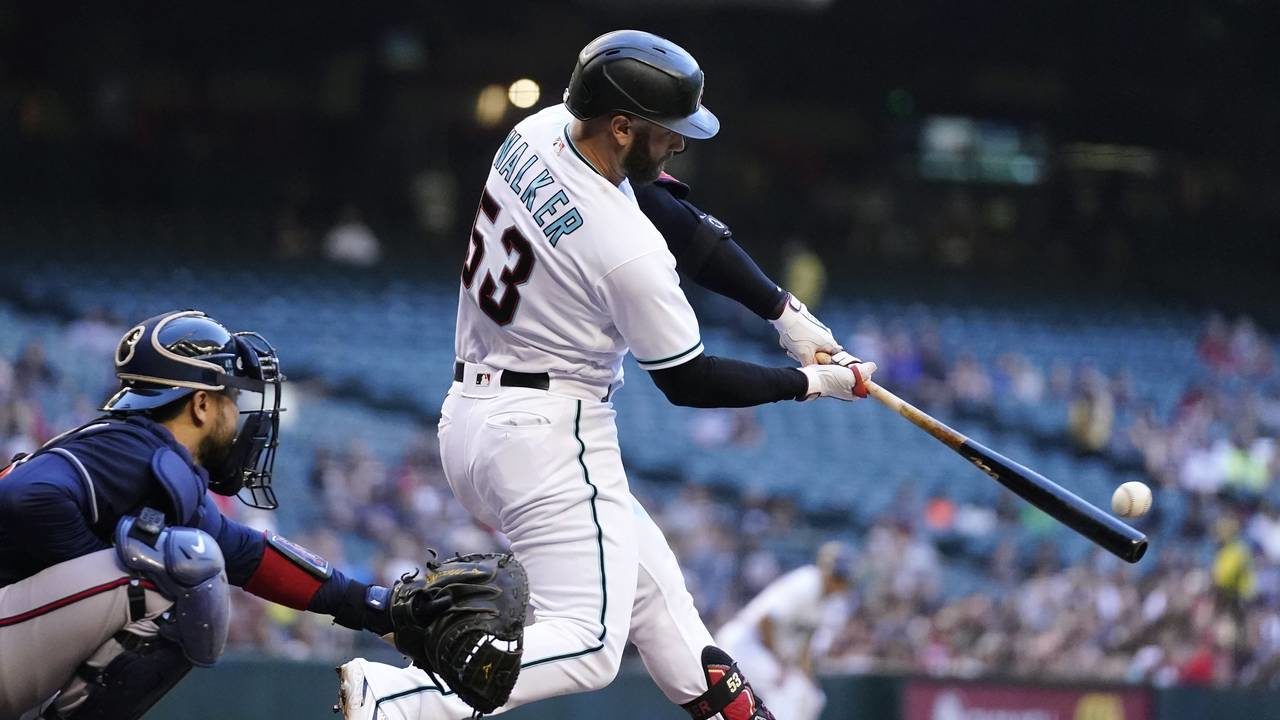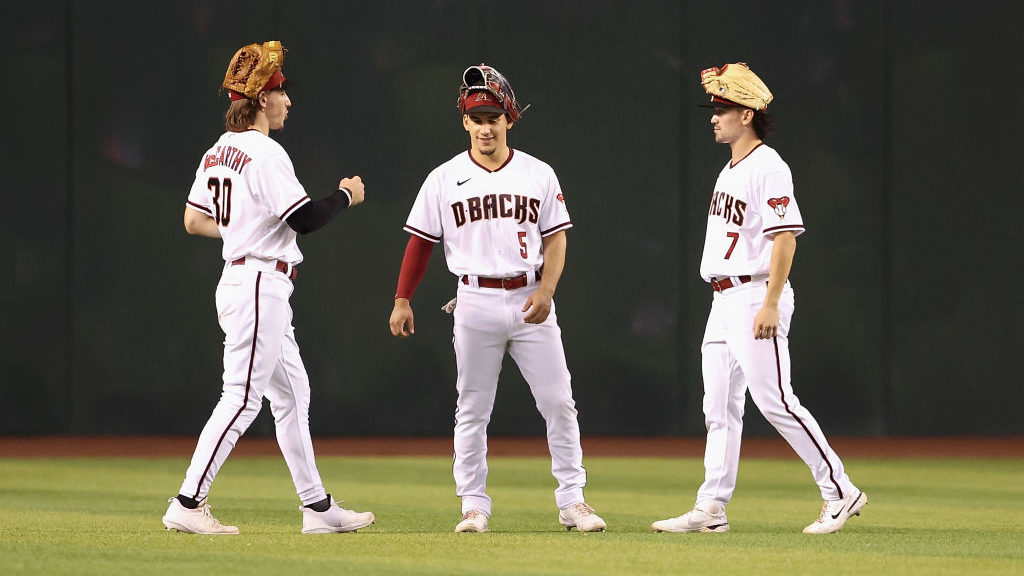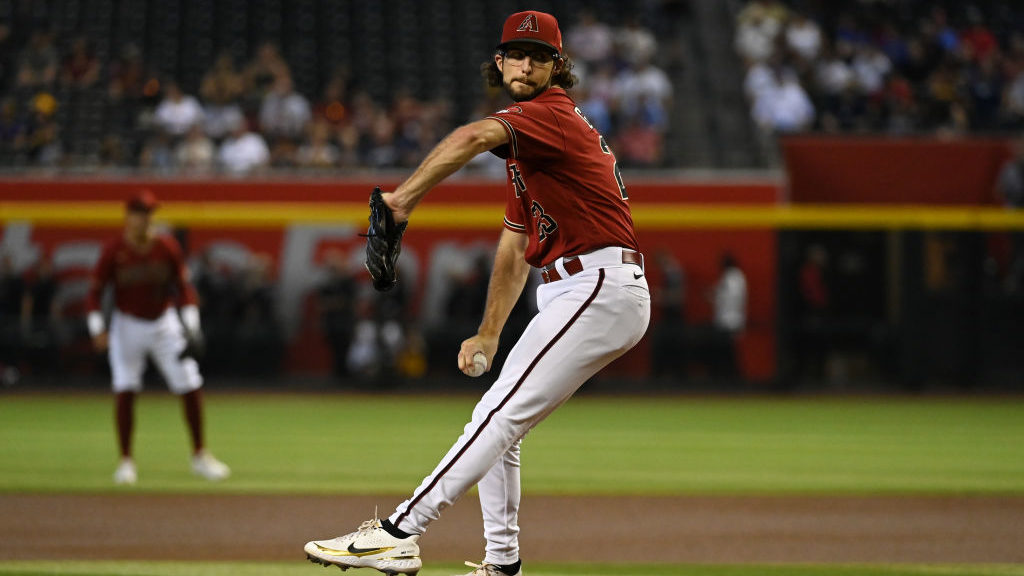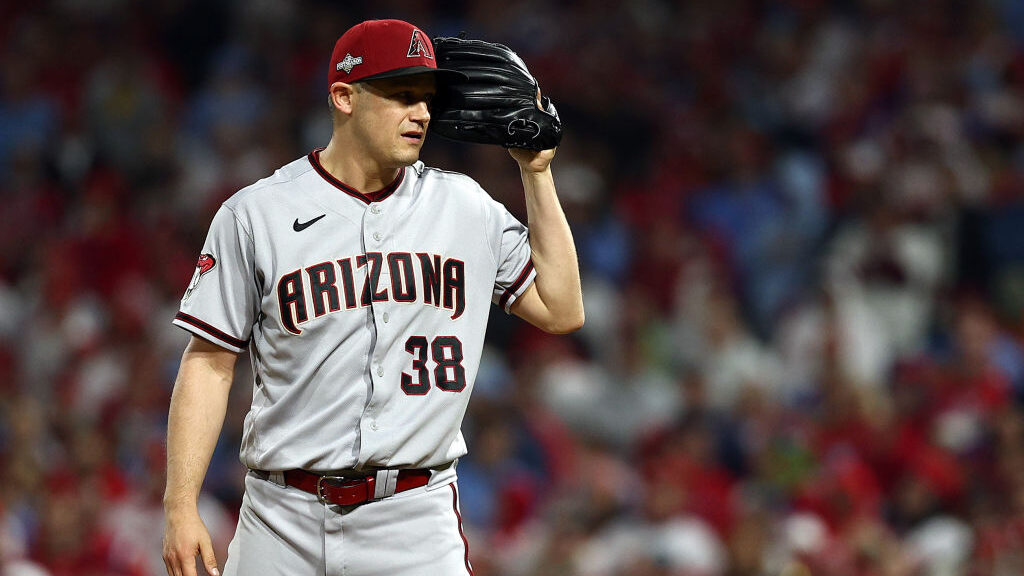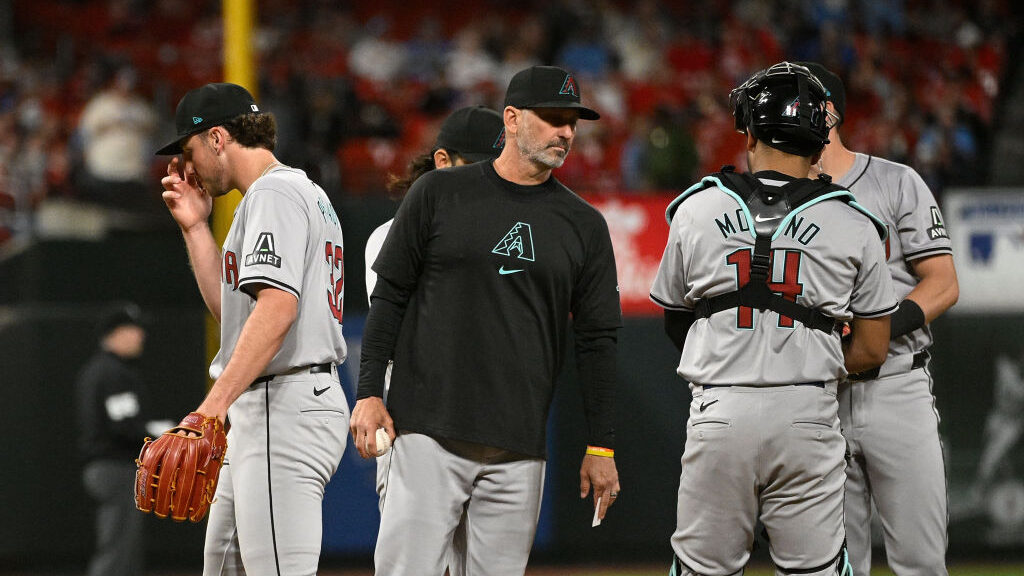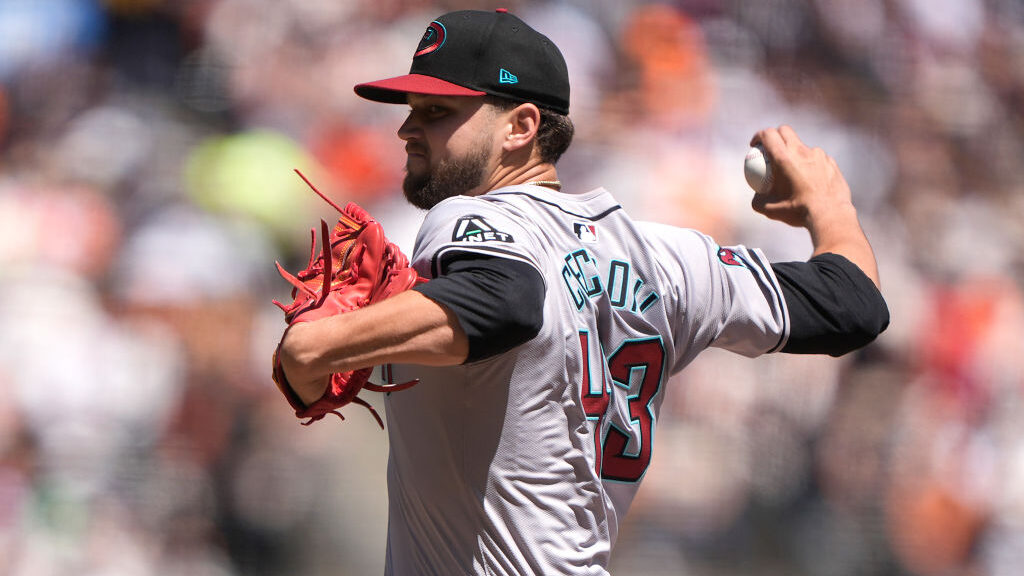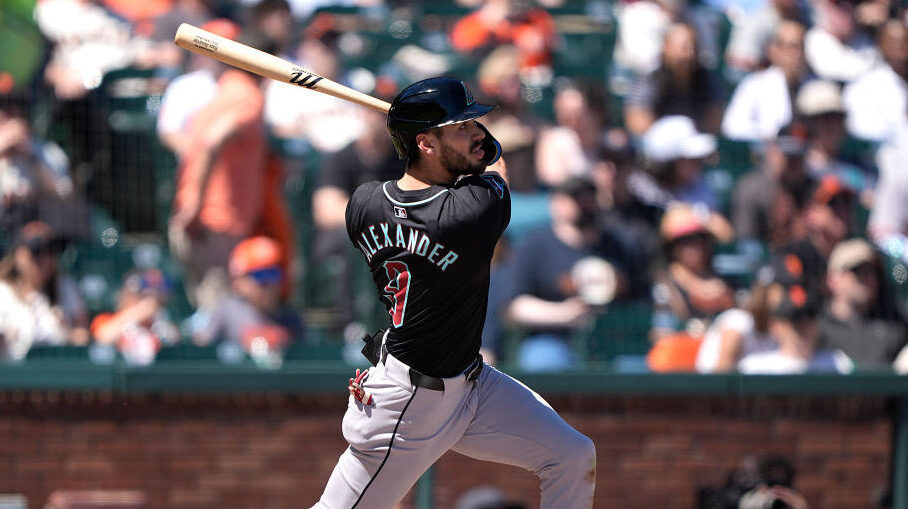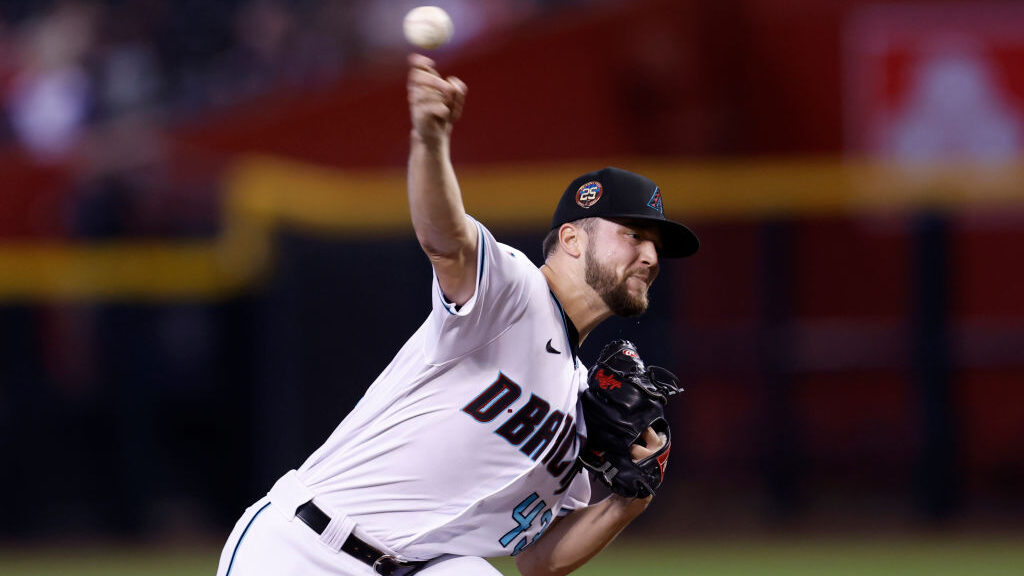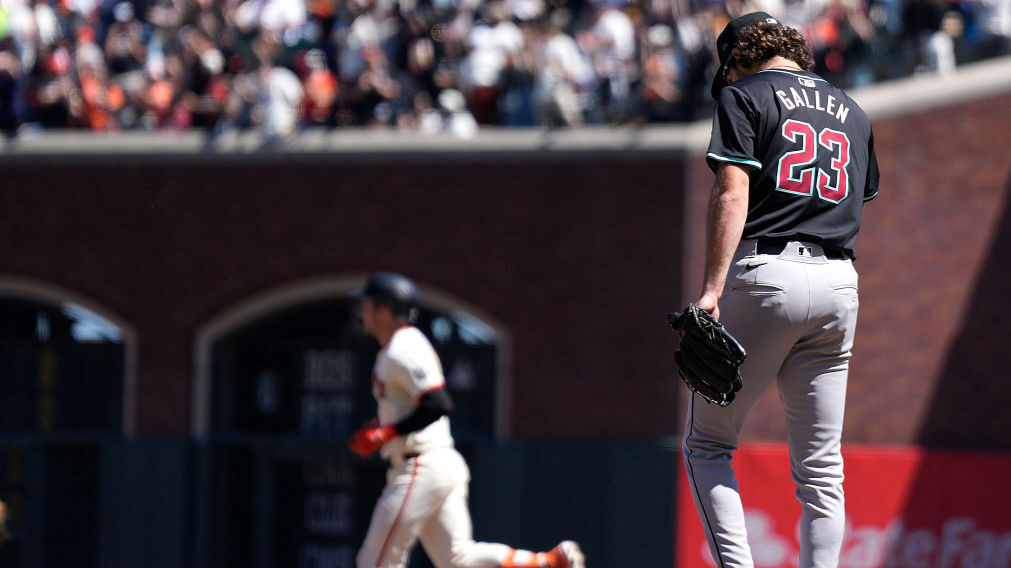Arizona Diamondbacks 2022 report cards: Bullpen
Oct 14, 2022, 11:00 AM
The Arizona Diamondbacks bullpen struggled mightily to hang onto leads in 2022.
They tied for the most bullpen losses in the majors with 41, had the lowest FanGraphs wins above replacement (fWAR) and tied for the eighth-most blown saves.
It wasn’t all bad for the D-backs bullpen. However, there’s validity to an argument that its struggles ultimately kept them out of postseason contention this year. They missed the postseason by 13 games, and 46 of their 88 losses had them, at worst, tied in the sixth inning or later.
All things considered, what grade does the Diamondbacks bullpen deserve for 2022?
Joe Mantiply
The left-hander was the Diamondbacks’ lone All-Star representative this season. In 69 outings, the 31-year-old posted a 2.85 ERA, 1.2 fWAR and more than 10 strikeouts-per-walk in 60 innings.
He also recorded two saves and a team-high 22 holds.
In the first half, Mantiply emerged as one of the best relievers in the sport. In 36.2 innings before the All-Star Break, he had a 2.21 ERA, a 57.6 groundball rate and 19 strikeouts-per walk.
He regressed a bit in the second-half, but still posted a serviceable 3.86 ERA and 47.9 groundball rate in 23.1 innings.
Ian Kennedy and Mark Melancon
The Diamondbacks acquired both veteran relievers after impressive 2021 campaigns.
Melancon especially seemed like a major addition at the time, as he recorded 39 saves along with a 2.23 ERA with the San Diego Padres last year.
However, the 37-year-old Melancon couldn’t replicate his success in 2022. His ERA jumped to 4.66, his groundball rate dropped from 56.4% to 44.1% and he struggled to strike hitters out.
He struck out 33% of batters he reached a two-strike count with. However, he struck out only 14.2% of batters overall.
As for Kennedy, his 2021 wasn’t as dominant as Melancon’s. That being said, his 3.20 ERA, 26 saves and 27.2 strikeout rate was nothing to scoff at.
Like Melancon, he couldn’t replicate the success. Unfortunately, his regression was more drastic as well. His ERA skyrocketed to 5.36 and his strikeout rate plummeted to 19%. He also walked more batters and saw a 58-point increase in his opponent’s batting average.
Kevin Ginkel and Kyle Nelson
Ginkel ranked second in the bullpen, behind Mantiply, with 0.5 fWAR in 29.1 innings pitched.
And for good reason, as he posted a 3.38 ERA with the second-highest average fastball velocity in the bullpen at 96.2 mph. He also led the team — with a minimum of 25 innings pitched — in K/9 (9.2) and was second in home runs per flyball rate (3.8%).
On the other hand, Nelson put up zeroes without an overpowering fastball or a ton of strikeouts. In fact, his 91.7 mph average fastball ranked fifth out of nine D-backs relievers with at least 25 innings pitched.
Nelson had an opponent’s batting average of .197 in 2022 — .248 on balls in play. He also tied fellow-southpaw Mantiply with a 1.08 WHIP.
Noe Ramirez
The D-backs released Ramirez in early September. That being said, he was still fourth in the bullpen in appearances.
In his 55 outings, the right-hander posted a 5.22 ERA, -0.6 fWAR and walked 12.1% of batters. While he struck out 23.7% of hitters, that 11.6% gap tied for 124th among 144 MLB relievers with at least 50 innings.
Unfortunately for the Diamondbacks, three other relievers ranked worse than Ramirez in that category — Kennedy (9.5%), Caleb Smith (9.2%) and Melancon (5.7%).
Not having a large gap between strikeout and walk rate isn’t a death sentence for a reliever, but it was for D-backs relievers.
Final Grade: F
It wasn’t all bad for the D-backs bullpen. However, its accumulative was a massive reason this team missed the postseason.
Three of the team’s top five relievers in innings pitched had an ERA of 4.66 or worse, with two having ERAs over five. Moreover, three of the top five also had negative fWARs.
The team has expressed a need to change their ideology when it comes to building bullpens, assistant GM Mike Fitzgerald said on Arizona Sports’ Wolf & Luke on Oct. 5.
“[Predicting reliever performances is] probably one of the more difficult areas when you’re talking about guys getting 60 innings,” Fitzgerald said. “But we’ve also got to be honest with ourselves in terms of how we’ve tried to approach solving that problem.”

